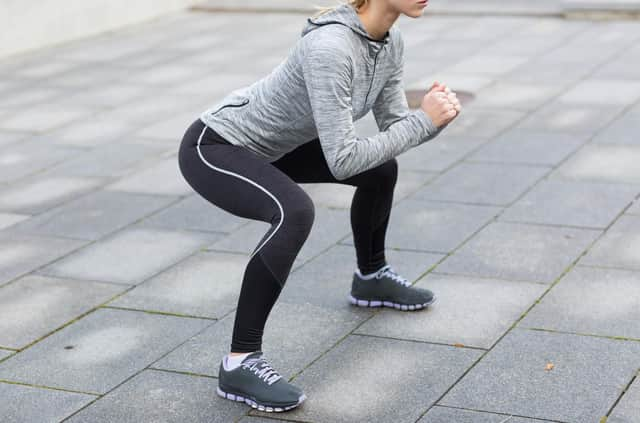FEELING GREAT: Doing the 2,800 Squat Challenge for the Teenage Cancer Trust? Here’s how to do it correctly


So 2,800 squats this month means 100 a day – and if it’s an exercise or motion you are not used to then, my first advice to you is simple: be careful.
Here’s what you need to know about doing squats correctly, and how you can avoid some common squatting mistakes.
1: Assume the squat stance
Advertisement
Hide AdAdvertisement
Hide AdBefore you squat, you should get in position. That means keeping your feet about shoulder-width apart. A guideline is for them to turn out anywhere between five and 30 degrees. Rather than pointing ahead, your feet should turn out slightly. How much they do will depend on your comfort and mobility.
2: Screw your feet to the floor
Fixing your feet into the ground helps engage your muscles, improve alignment, and create stability with the ground. It’ll also help keep your arches from collapsing, which can make your knees more likely to cave inward.
3: Keep your chest up
Keep your chest up, your chest proud. This prevents your shoulders and upper back from putting extra stress your spine.
4: Initiate the movement
When you’re ready, think about starting the movement by bending your knees and pushing your hips back. Inhale while you lower, and as you squat down, your knees should track above your first or second toe. Tracking too far in can also make your knees collapse inward, and tracking too far out can put extra stress on them.
5: Pause when you reach parallel
Advertisement
Hide AdAdvertisement
Hide AdWhen you should stop your move? Aim for parallel depth which means the back of your thighs are parallel to the floor.
Some people have difficulty getting to parallel because of lack of mobility or injury— if so, it’s better to end the squat at whatever depth is pain-free for you.
Once you reach the bottom of the squat, pause for a second so you are not using momentum to push yourself back up.
6: When you stand, drive through your heels
Make sure your feet stay planted throughout, paying attention to driving through your heels on the way back up. Try and avoid picking up your toes, you want to make sure your entire foot stays firmly on the ground.
You should also exhale on your way back up. Inhale on the way down, exhale on the way up.